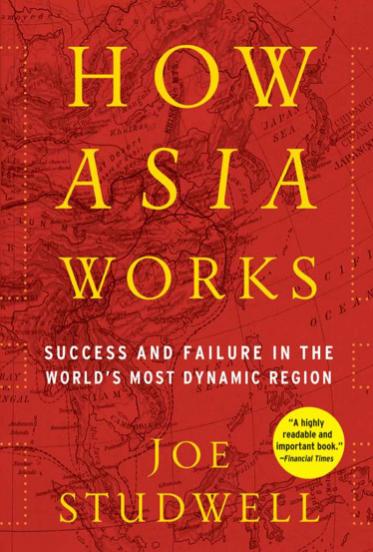 Success in manufacturing has two conditions: tariff barriers to shield the infant industries from external competition, and a rigorous focus on exports to ensure that manufacturing cannot just shelter behind the tariff barriers and reap monopoly profits inside the country. Each industry needs to have several companies enter, so that it is possible to cull (or merge) the weak rather than have a national champion that must be supported for political reasons. So Toyota and Hyundai, TSMC and Huawei, Toshiba and Samsung are all international leaders these days, not many decades after they were nobodies, but originally they were not national champions just one of many (well, mostly, just a few). In the early days the focus is not so much on profitability but on learning, with the aim of becoming a global technology leader, which can only be measured on a global scale by export success; being successful internally usually just indicates being well-connected politically (sugar quotas, ethanol distillation, anyone?). To get tax-breaks, low interest loans, foreign currency, requires exports (which are also easy to measure) even though companies don’t want to export (it is far easier to sell low-quality stuff internally if they can get away with it).
Success in manufacturing has two conditions: tariff barriers to shield the infant industries from external competition, and a rigorous focus on exports to ensure that manufacturing cannot just shelter behind the tariff barriers and reap monopoly profits inside the country. Each industry needs to have several companies enter, so that it is possible to cull (or merge) the weak rather than have a national champion that must be supported for political reasons. So Toyota and Hyundai, TSMC and Huawei, Toshiba and Samsung are all international leaders these days, not many decades after they were nobodies, but originally they were not national champions just one of many (well, mostly, just a few). In the early days the focus is not so much on profitability but on learning, with the aim of becoming a global technology leader, which can only be measured on a global scale by export success; being successful internally usually just indicates being well-connected politically (sugar quotas, ethanol distillation, anyone?). To get tax-breaks, low interest loans, foreign currency, requires exports (which are also easy to measure) even though companies don’t want to export (it is far easier to sell low-quality stuff internally if they can get away with it).
The third stage is handling finance. Don’t let the money in the country be invested abroad or leak into real-estate. Force it to be in agriculture initially, then export-oriented manufacturing. Don’t deregulate and remove capital controls too soon. Otherwise, like Indonesia, everything goes into a real-estate and stock bubble, none of which serves the needs of the country as a whole. And eventually the bubble bursts and the banks are bankrupt. If the state controls the banks (through what they will let the banks do and what risks they will let the banks offload) they can direct investment.
The big reason that South East Asian countries are not successes is that they didn’t do the land reform; In most cases because the ruling elite owned a lot of the land and didn’t want lose their cash cows. So the alternative is the status quo, which is semi-permanent revolution/uprisings since the peasants have nothing to lose and the landlords make all the money. That’s why you constantly read about riots in Thailand and Philippines, for example. But there is no point in the peasants increasing productivity since the landlords will simply capture the gains in increased rents, so agricultural productivity is low. Meaning that at the country level there is no agricultural surplus to both feed the cities and fund the transition to manufacturing.
Manufacturing is not always forced to be internationally competitive, or even internally due to multiple companies. So, for example, Malaysia’s Proton automobiles are not forced to be exported, and the steel from which they are made has to be imported since Malaysia’s one steel company is also not internationally competitive and only makes low-grade steel good enough for building inside Malaysia (which is highly profitable due to the tariff barriers). The young Hyundai, by comparison, had to compete with Kia and some other car companies you have never heard in Korea. And they had to export. Its plants are built at the side of the river ready to load cars on to ships. Proton is just outside Kuala Lumpur, inland. Hyundai only got financing in proportion with how much it exported, Proton was a national champion and was not allowed to fail even though it was not competitive (aka failed).
Highly recommended. Amazon link here. I have no financial interest in this book.
Share this post via:






TSMC N3 Process Technology Wiki